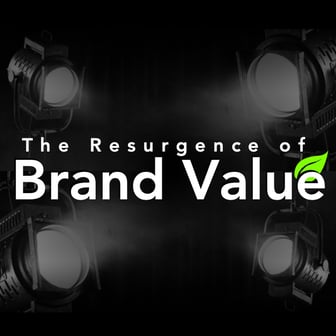In the early part of 2021, global analysts McKinsey & Company published a number of articles noting that the COVID crisis has led, among other things, to a resurgence in consumer preference for premium brand goods, together with positive correlations of product performance and overall value for money—despite higher up-front expense. In the following blog, we review what accounts for this renewed perception, together with examining the factors that customers have rediscovered as giving these brand purchases distinct and practical advantages.
review what accounts for this renewed perception, together with examining the factors that customers have rediscovered as giving these brand purchases distinct and practical advantages.
A convergence of market volatility, supply chain breakdowns, logistical bottlenecks, melded to a vivid atmosphere of increasingly dazzling, but devalued “five star” customer reviews, has led to a resurgence in consumer choice for branded goods. Pragmatically, the change has been driven by on-going negative supply, quality and delivery issues characterizing many non-branded goods, against a more settled, consistent and dependable items from pedigree producers.
The latter have the advantage of weathering of previous commercial storms; honing every level of their business operation as a result. Additionally, they have learned a raft of effective work-arounds and amassed significant loyalty from their suppliers, as well as perfecting cooperative and working relationships. As a result, their vendors go the extra mile in times of scarcity or logistical challenge. Finally, such brands have invested decades in building product prestige; a recognition they will fight equally hard to sustain when facing headwinds. The latter will eventually fade, but the former provides the bedrock of business growth for decades to come.
The events of 2020—and continued challenges of 2021—have allowed brands to quietly exploit these and other advantages against a backdrop where many non-branded competitors have fallen short. In many cases, the latter was not so much indicative of business failure, as the harsh facts of commercial immaturity, limited resources, and shorter business experience. In each case, negative factors amplified by larger ecosystem dynamics.
Pragmatically, brand advantage manifests itself in:
- Proven quality, allowing the customer to buy with confidence;
- Local servicing and support, ensuring convenience;
- Speedy resolution of faults or product replacement, minimizing downtimes;
- Geographic customer service, allowing for ease and clarity of communication.
For a price-premium, branding provides the customer with confidence, convenience and a first-rate purchase experience; in the end actually saving money, certainly time, and stress.
In this age of COVID management, the exponentially growing pressure on brands to improve performance still further is driving digitization at a very fast pace; far more intimately connecting company with consumer and vice versa. In turn, this drives the depth and efficiency of intra-corporate communication, making companies both more aware of customer requirements and bringing unparalleled focus to product developers’ understanding of what customers actually need. This results in a flow of information that is more conversation than monologue, simultaneously driving the necessary agility to meet these expectations.
It is a mistake, however, to see brand advantage in purely customer-centric terms, as there are advantages to their owners that are far more important than merely being able to command a price premium. Branding drives internal pride and the corporate pursuit of excellence; it enhances employee job satisfaction and performance consciousness; it drives ecosystem recognition and eases cooperation; branding provides for visibility of performance, which spurs senior management to greater diligence and core business metrics; it improves service from vendors, who gain kudos by association; branding drives strategic positioning, portfolio synergy and coherence, which enhances co-operative opportunities, as well as potential mergers and acquisitions. Brand recognition allows companies to work with the best in their field. Finally, brand perception marks the “canary in the coal mine”; tarnishing, while unpleasant, is not a death knell but allows plenty of time for commercial reorientation and business rectification. Everyone loves a good turn-around story.
At this juncture, it is vital to emphasize that neither business longevity, nor simple recognition, be confused with brand value. The contemporary consumer discovers actual value before he attributes value to the brand. There is no chicken and egg conundrum here; value comes first. The latter is perhaps effectively defined as the frictionless fulfillment of heightened consumer expectation. A definition that brings us to a critical and heretofore unmentioned factor driving this resurgence; Millennials as the now dominant commercial generation. Unlike baby Boomers, whose focus was more on existential perception, Millennials are looking for a demonstrable and pragmatic stream of on-going value enhancement. Seeing is believing.
----
Dr. Anthony O'Sullivan
Palomar Technologies
Strategic Market Research Specialist